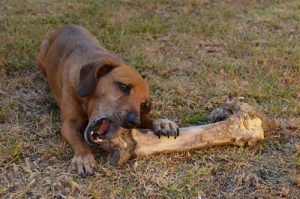Dry Itchy Skin? It Could Be Food Intolerance
 You’ve noticed that your dog’s coat has changed texture, or is suddenly shedding more, or is falling out more in some places rather than others. Perhaps your dog has dry, flaky skin and is scratching constantly. Naturally, your first thought might be that it is a product you are using on their coat or reaction to some sort of stress. While these are certainly possibilities, another possibility is a food intolerance or allergy.
You’ve noticed that your dog’s coat has changed texture, or is suddenly shedding more, or is falling out more in some places rather than others. Perhaps your dog has dry, flaky skin and is scratching constantly. Naturally, your first thought might be that it is a product you are using on their coat or reaction to some sort of stress. While these are certainly possibilities, another possibility is a food intolerance or allergy.
Cruising San Diego, grooming all of your awesome doggies gives us plenty of opportunity to get to know your pet family, and your concerns about theirhealth. One of the most common concerns is a sudden change in their coats. Certainly any change is cause for concern, but sometimes the cause and the solution are pretty simple.
Very often a sudden change in the coat or skin is due to a food intolerance, or food allergy. This is usually the case when you have changed their diet or added some new treat.
Common Signs of Food Allergy or Intolerance
It is not always easy to spot a food allergy, and the symptoms are similar to other health problems. If your dog has intolerance to food, you might see some of these common symptoms:
-
 Dry skin
Dry skin
-
Excessive loss of fur
-
Constant chewing at fur
-
Dull fur
-
A change in the texture of the fur
-
Stinky ears or waxy or bloody discharge
-
Vomiting
-
Diarrhea
-
Loss of energy
How to Determine Source of Food Allergy or Intolerance
If you have ruled out other environmental factors such as pesticides in the yard, as the source of the skin problem and you suspect diet is the source of the problem, it is time to pinpoint the trigger. Here are some important tips for determining the cause of skin problems.
-
First, have your dog examined by the vet to rule out any other health problems.
-
Once other problems are ruled out, remove one thing from your dog’s diet at a time.
-
Give your dog time to adjust between each item removed, giving at least two weeks to see if symptoms subside.
- Alternately (and I personally found this approach to be the easiest), take the “eliminate everything” approach and put your dog on a strict diet of hypoallergenic dog food – usually this can easily be done by feeding a high quality dry kibble made from ingredients that most dogs are not allergic to, such as potato, lamb, duck, and rice. Avoid common (but problematic) ingredients like corn, wheat, beef and chicken. Don’t feed any treats. If the symptoms disappear in a few weeks, it’s a pretty good bet that a food allergy is the problem.
-
Remember anything can be the culprit. Dogs can even develop an allergy to something they have eaten for years.
Once you have determined the culprit food, remove it from their diet and ask the vet for substitution suggestions and tips on furthercare for them. Contact us to let your groomer know you are changing your dog’s diet and we will alert you to any changes in your dog’s skin or fur that we notice.
For more info about dog food intolerance:
Most Common Food Allergies in Dogs l Cesar Millan
